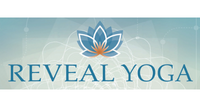What draws you to yoga? What about yoga intrigued you from the beginning? Did you see a pose you wanted to try? Was it an experience you had in class? Something written in a book or article? Rave reviews from someone you know? When trying to appeal to students many teachers will talk about the …
Maintaining a daily yoga practice is important however so is taking time to rest. It is advised to take 1-2 days off from yoga each week. The body and mind need time to restore and recuperate. During rest periods one can engage in other yogic activities such as learning about yoga through the internet, books, …
There are many health benefits to yoga. Practicing 20 minutes of gentle yoga each day can improve one’s mood and boost energy. When developing a yogic path it’s important to check in with yourself and ask what are you aiming for. While in yoga we do work to become unattached to our fruits of practice …
As our yoga practice develops the quality of our poses change. There are hundreds of yoga poses in B.K.S Iyengar’s Light on Yoga yet often he would teach for hours focusing only on a few poses. Doing a good pose for a few moments is better than holding a lousy pose for several minutes. How …
The first yama ( external observances) of the first limb (anga) of yoga is non-violence. Now, what does not inflicting harm to anyone or anything truly mean? While doing asanas we come out of a pose that is causing us pain that may be harmful. With practice, courage, and tenacity we can decipher what sensations …
One of the yamas* known as aparigraha means non-covetousness, non-hoarding, without possessions, without belongings, non-acceptance of gifts. How does this relate to yoga practice? In some poses a side may be favored because it is stronger or more flexible. There can be a tendency to overuse the dominant side and neglect the weaker. Can we …
The second limb of yoga is known as the niyamas , internal observances necessary for success in yoga. They include: sauca-cleanliness santosha-contentment tapas-discipline, burning desire, austerity svadyaya-study of the Self Isvara Pranidhana-Surrender When we practice yoga asana all niyamas come into play. Just as bathing is needed everyday so is the practice of asana to soothe …
When does yoga practice begin and when does it end? Some speculate that one’s yogic journey begins when yoga is known about, irregardless of whether one pursues a yogic path or not. So, let’s assume you heard about yoga and you want to learn more. What do you do? Do you look at a website …
When you breathe ,do you notice if breath is moving through the mouth or the nostrils? Does one nostril take in more air than the other nostril? While practicing yoga the breath may be smooth and soft. During a challenging pose the breath could be fast and labored. By opening and uplifting our torso while …
When learning yoga one uses movable and perceivable parts. We work with what we can see with our eyes. This includes, toes, soles of feet, heels, ankles, shins, calves, knees, thighs, hips, buttocks, pelvis, abdomen, chest, shoulders, elbows, hands, fingers, wrists, neck, and head. The back is more difficult to activate since it is hard …
